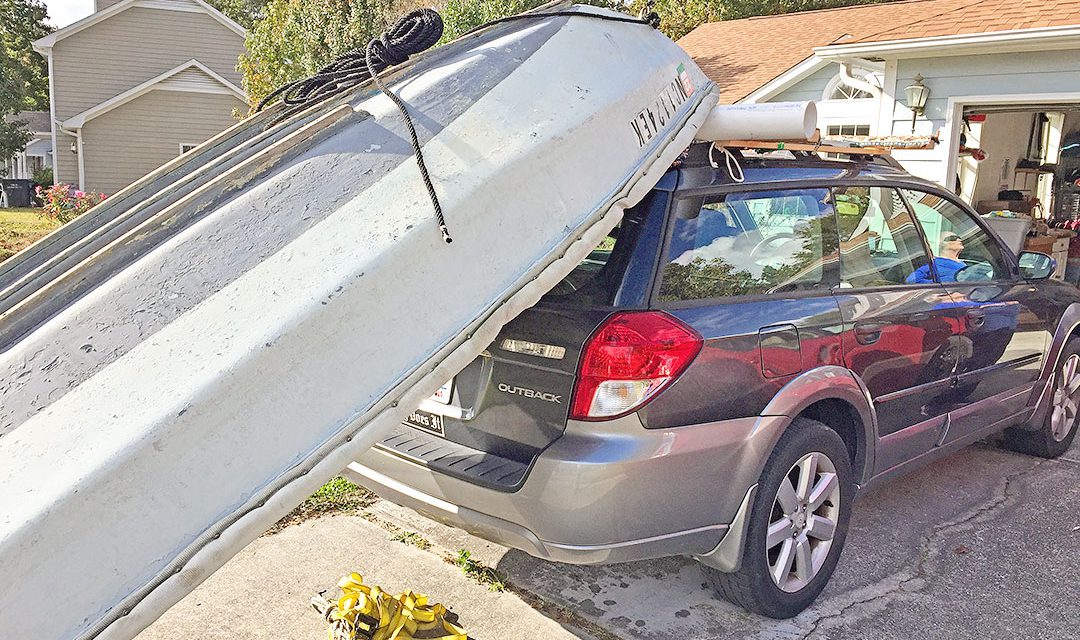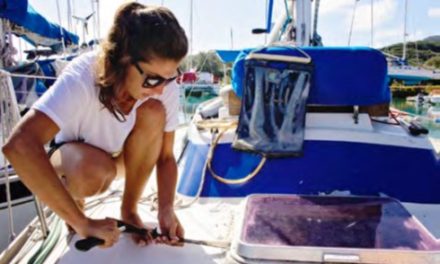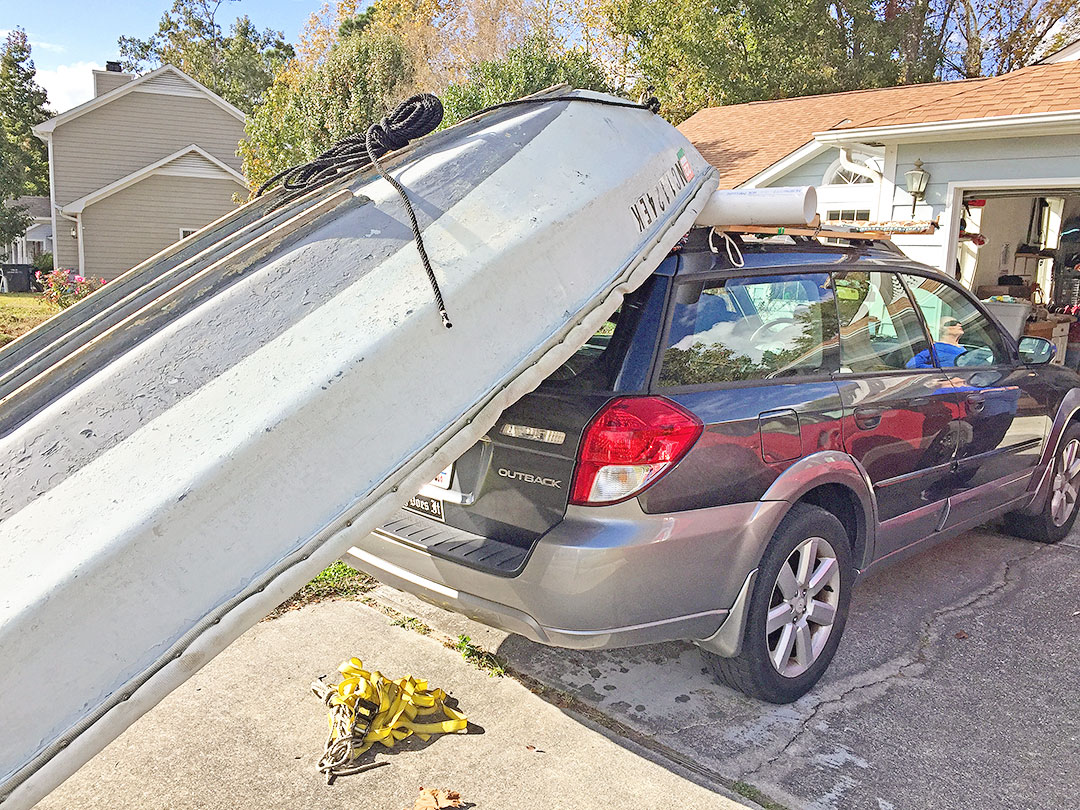
After I built my dinghy, an 11-foot 6-inch plywood Bolger design coincidentally called “The Cartopper,” the first problem I faced was: how do I get it to the boatyard? Obviously, on the roof of my car, as I didn’t have a trailer or a pickup truck handy.
I had a car with roof rails, but the dinghy’s beam, 4-foot 4-inches finished, was too wide to fit the factory built rails. So I had an idea — why not make a wooden rack that would fit on the car top and be wide enough to support the gunnels laterally? To secure it fore and aft, all I had to do was tie the dinghy down to the built-in eyes on the underside of the car in the front and back.

The two 5-foot 2×3 cross pieces will take all the weight of the dinghy, supported by the car’s built in roof rack.
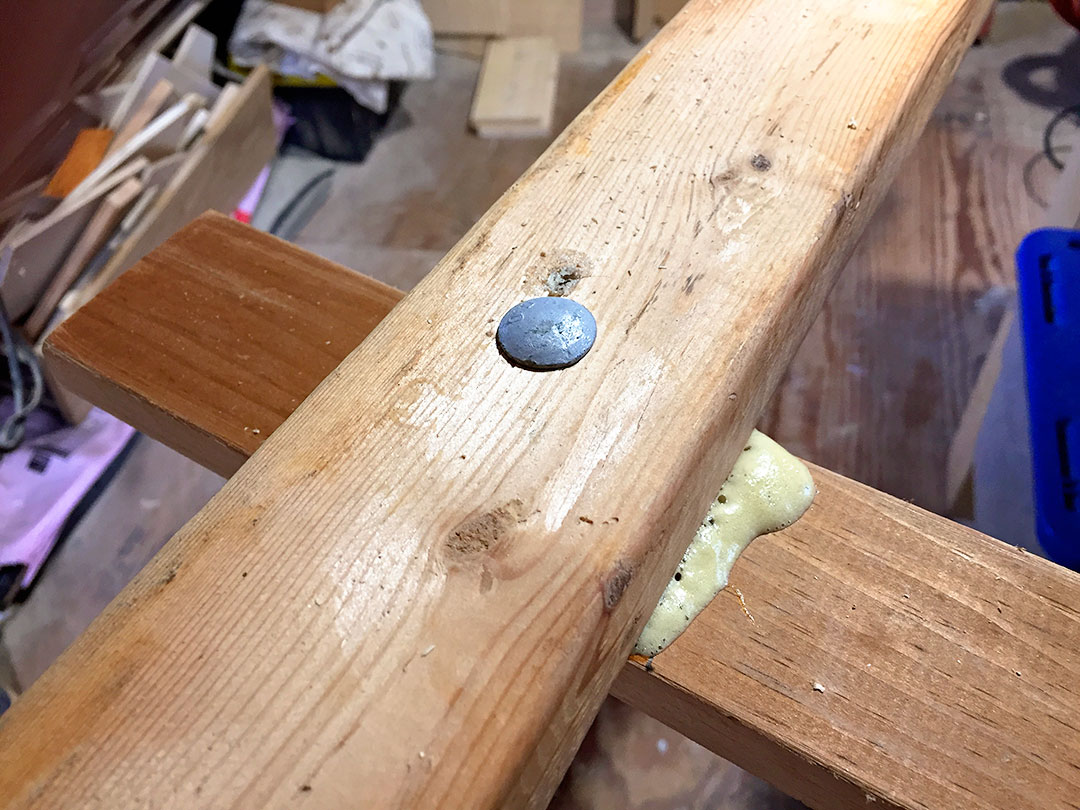
The fore and aft struts and cross pieces are carriage bolted together and glued with expanding glue. The heads of the carriage bolt should be on the top, as they will be less likely to chafe the dinghy than would be the threaded ends.
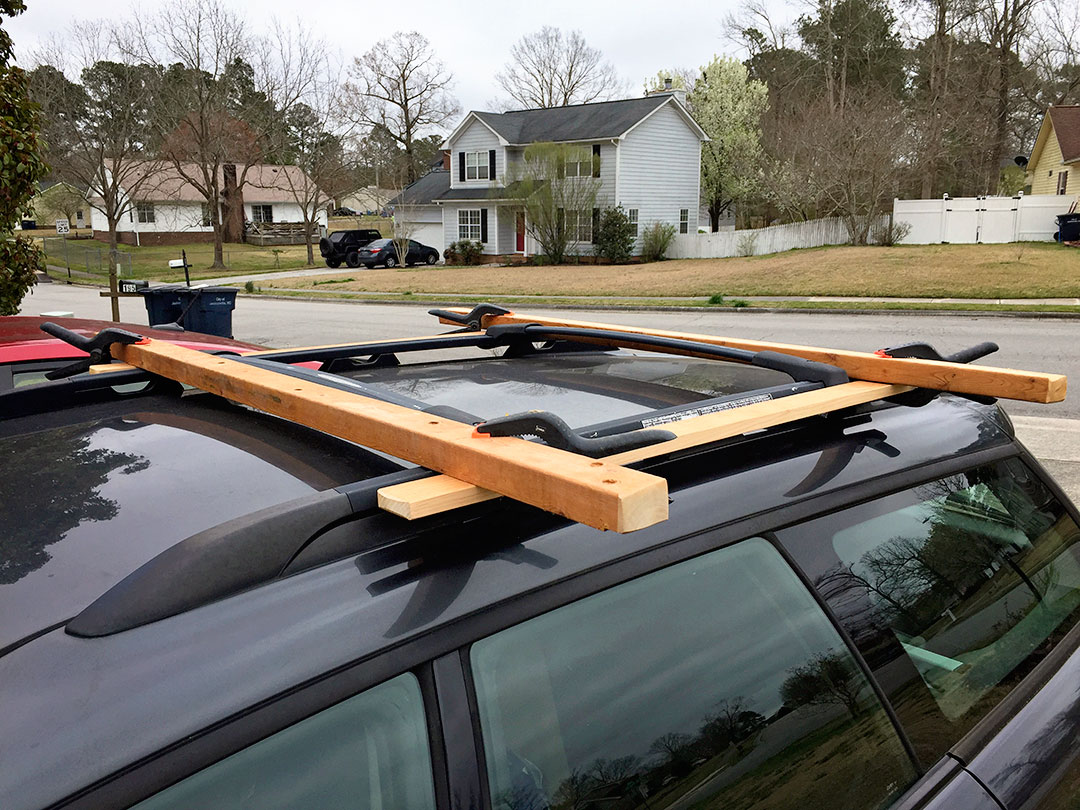
Dry fitting the cross pieces with the 1×3 fore and aft supports. Note: the fore and aft struts will keep the load from shifting in a turn and must be sized to fit just outside of the car’s roof rails. Each car is different, so measure twice and cut once.
Building it was easy enough: I used two 5-foot lengths of 2×3-inch planking to fit across the roof, carriage bolted to two 3-foot 7-inch lengths of 1×3 fore and aft tying them together into a box shape. I then covered the 2x3s with rug scraps to protect the varnish on the dinghy gunnels. The only other considerations were that the 1x3s had to be wide enough apart that they would fit on the car just outside of the roof rails, and that the 2x3s would fit just in front and behind the lateral rails on the car top.
The dimensions of the finished unit depend on the individual car itself, but it’s easily placed onto the car and lashed down an appropriate size and type of line. The maximum size of the load on the roof is defined by its weight, not length overall, and the maximum weight on the roof rails depends on the car; it varies, but on some, the maximum is only 100 pounds, primarily to keep the center of gravity low.
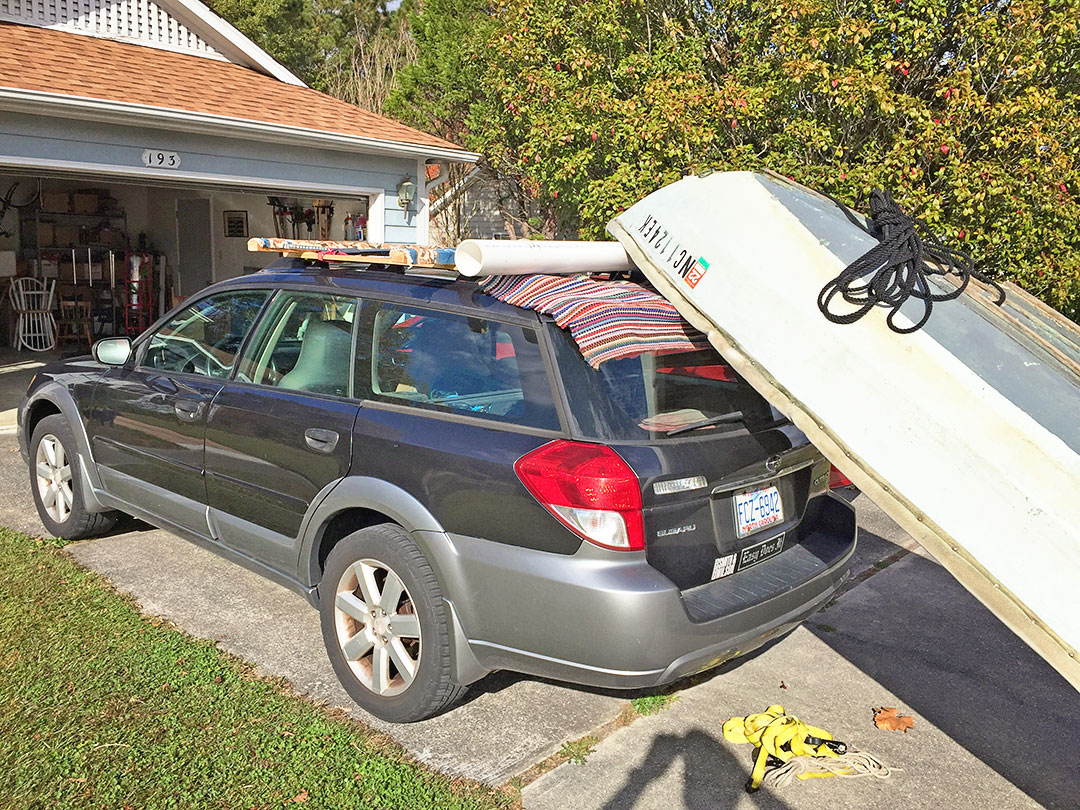
The finished rack with rug scraps stapled on to prevent chafe.
The only other trick is getting the dinghy onto the rack (and off it again!), which is easy enough for two or three, but not so easy for one. However, I’ve found that I can stand the dinghy upside down on the transom and jam one end of an oar under a forward thwart and the other onto the ground, which raises the bow high enough that I can back the car up to the bow. Then, working alone, I “walk” the dinghy onto the rack (don’t try that trick on a windy day!). The safest way is for two or three people to hoist it into place.
Once the dinghy is on the rack, I secure it side-to-side with webbing on the roof rails; and the bow to the two eyes under the bumper at the front of the car, and the single eye under the bumper at the back of the car. I’ve done this twice a year for more than 30 years, driving at 60mph, sometimes with a good cross wind, with no problems so far.
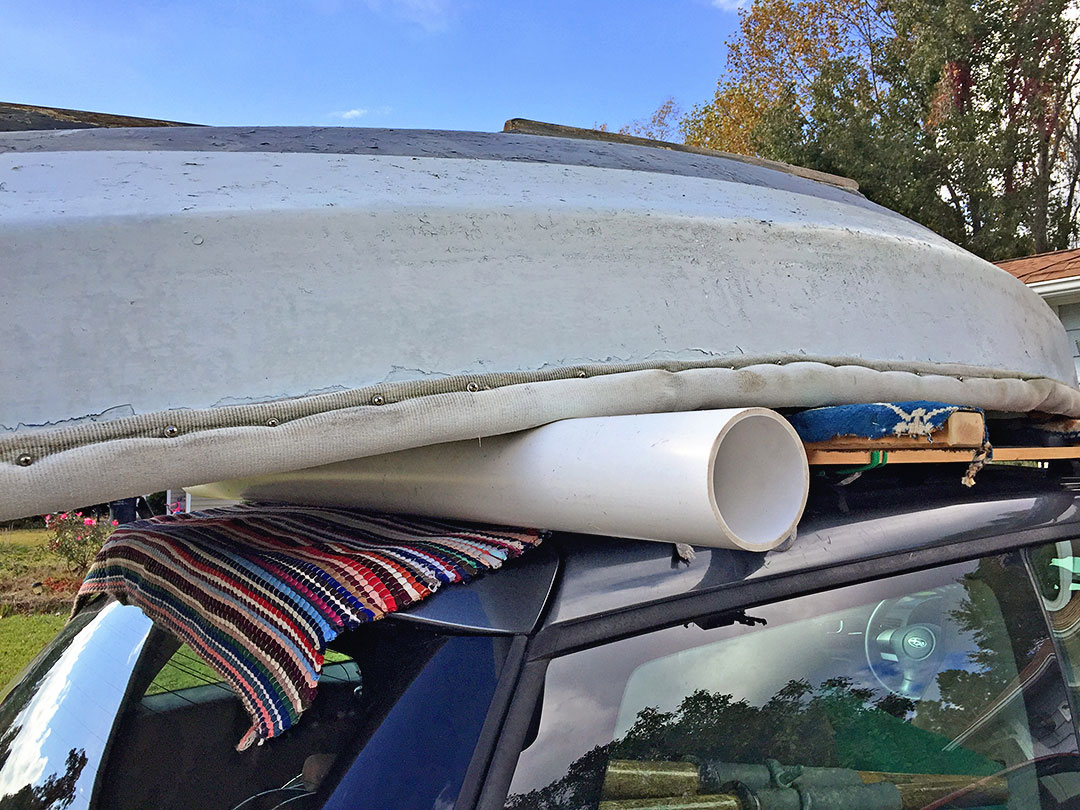
The roof rack with the 11’6” dinghy on board, carefully secured fore and aft and side to side against shifting in a cross wind or while turning. The auxiliary rack itself must be secured to the car’s built-in roof rack. An unsecured dinghy will go airborne, and not in a good way.

